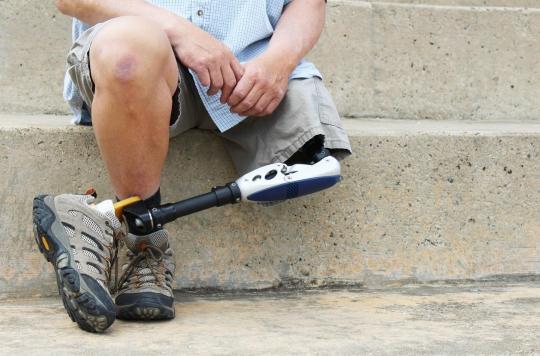Body identity dysphoria (BID) is a rare mental disorder in which sufferers feel that a healthy limb does not belong to them. According to a new study, this desire for amputation could be linked to specific abnormalities in the structure of the brain.

Body identity dysphoria (BID), formerly referred to as body integrity identity disorder (BIID), is a rare mental disorder. People who suffer from it feel terribly uncomfortable in their body, as if one of their healthy members was not supposed to be part of it. The discomfort is such that they sometimes ask to have the limb in question amputated to feel complete. According to an article in the journal Current Biology on May 7, this desire for amputation could be linked to specific abnormalities in the structure of the brain.
To explore the brain mechanisms associated with DIC, Gianluca Saetta, a PhD student at the University of Zurich, and Peter Brugger, from the Psychiatric University Clinic (PUK) in Zurich (Switzerland), recruited 16 men who want to have their legs removed. healthy left and 16 healthy controls.
The researchers thus discovered alterations in two key regions associated with BID. Thus, the right paracentral lobule (rPCL), which houses the primary somatosensory representation of the affected left leg, showed reduced intrinsic functional connectivity to other parts of the brain. They also observed a reduction in intrinsic functional connectivity and a reduced concentration of gray matter in the right superior parietal lobule (rSPL).
The importance of functional connectivity and gray matter density
Thus, the interplay between gray matter characteristics and the functional connectivity of certain regions could be behind whether a person feels at home in their body or not.
“The feeling that a limb belongs to us depends on the extent to which the sensorimotor area of the limb is functionally connected to all other regions of the brain”, explains Gianluca Saetta. Here, the researchers therefore found that the sensorimotor area of the leg to be removed as part of a BID was less connected to other parts of the brain. “Functional connectivity and gray matter density in the area most crucial for representing our body’s appearance—the right parietal region of the brain—are also crucial factors in this sensation.”
“Interestingly, the less gray matter in the right parietal region of the brain, the stronger the desire for amputation, and the more people with BID act as if they were amputated.he continues. This pretend behavior helps them deal with the distressing mismatch between how they want their body to look and how they see it..”
Brain stimulation techniques to treat the sick?
“We show clear associations between a mental state and changes in brain structure and functionalityexplains Peter Brugger. It is unclear whether the neural signature of IDB comes first and impedes the development of normal limb property or whether decades of worry about the lack of such a property modulate the brain circuits mediating body awareness.”, he continues. Thus, it is difficult to say whether it was the BID that caused a lack of functional connectivity in the brains of these patients or the opposite.
These results suggest that brain stimulation techniques, such as transcranial magnetic stimulation, could help people with BID, say the researchers, who recommend further studies on the subject. Currently, many variants of BID remain unknown, especially concerning patients who believe that they should be paraplegic or blind, the researchers point out.
Accept bodily integrity dysphoria as an official mental disorder
Another unknown: the number of people suffering from BID. Indeed, it’s a safe bet that many patients have never spoken of their symptoms to a doctor. This is why researchers advocate that “dysphoria of bodily integrity” be included in the 11and revision of the International Classification of Diseases (ICD-11) as “distress or body experience disorder”. Once the disease officially “accepted as a disorder, more people will come out and identify as suffering”hope the researchers, questioned by the site News-Medical apart from their study.
The origins of the IDB are also uncertain. “Most sufferers can trace their dysphoria back to early childhood. Some claim that there was a certain triggering event, for example being fascinated by the observation of an amputeethe scientists tell News-Medical. It is even possible that there is an innate component, which allows the normal physical development of a limb, but which hinders the development of a normal cortical representation”they detail.
Anyway, for researchers, this disorder is definitely an evil of the century. “The identification with ‘social body image’ is important and is reflected in the fact that DIC is primarily a disease of our western society, similar to anorexia, which is a dysphoria entirely different in bodily experience”. That’s why, Gianluca Saetta soon plans to compare subjects with BID with people dissatisfied with their sex or anorexic.















